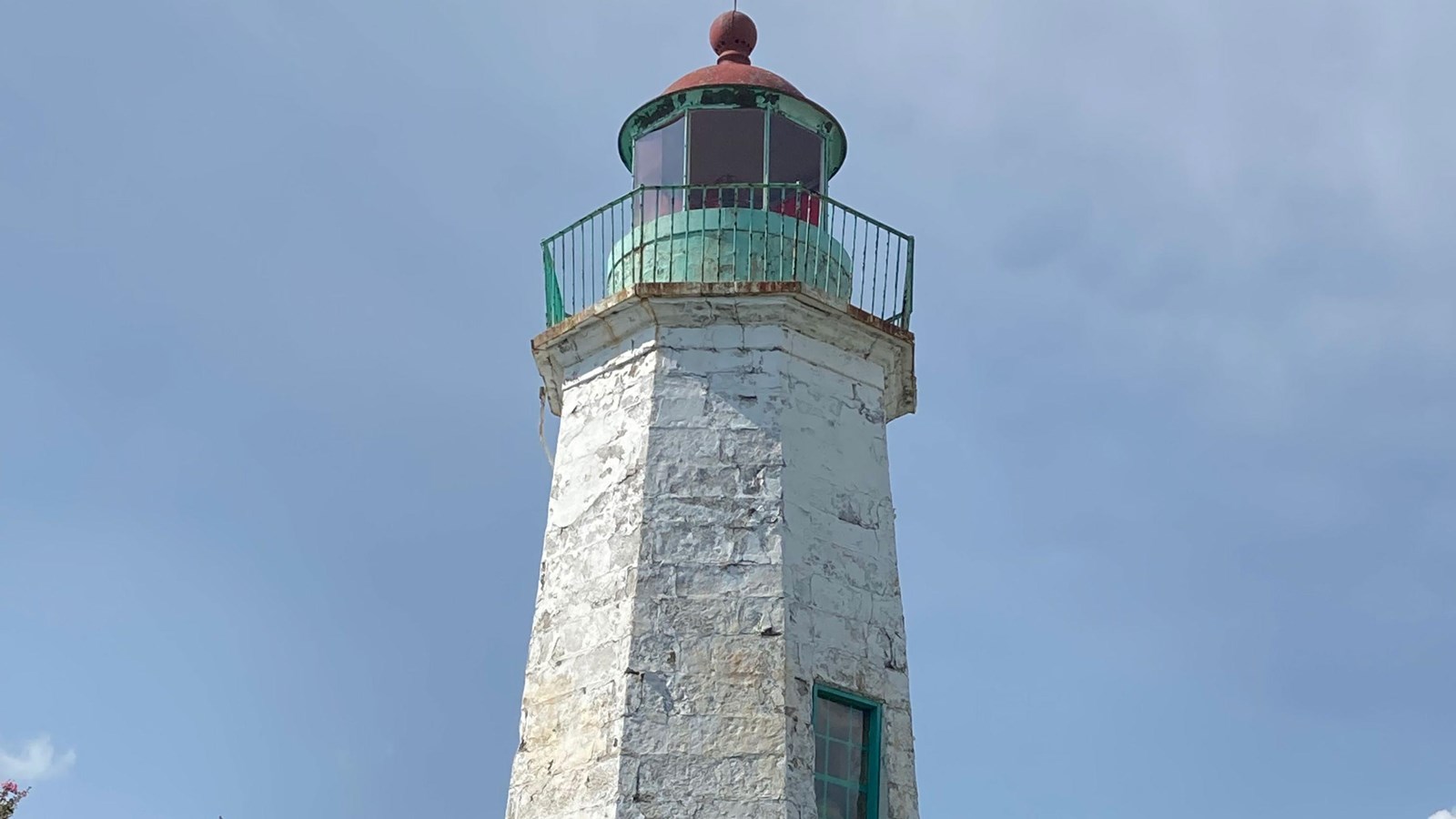Last updated: August 5, 2024
Place
Old Point Comfort Lighthouse

NPS Photo
Cellular Signal
Aids to navigation at Old Point Comfort may date back to the 1500s. American Indians may have burned wood along the coast to aid Spanish ships in the harbor. In 1774, Virginia hired John Dames as caretaker of the ruins of Fort George. Tradition holds that a bored Dames operated a light to guiding ships into Hampton Roads.
Lighthouse Built
The 54-foot white octagonal structure was built in 1802. It is the oldest structure at Old Point Comfort. A spiral staircase leads to the top, where ten oil lanterns burned 486 gallons of oil per year. In the 1800s, sailors could the oil lanterns up to fourteen miles out to sea.
Captured in War
During the War of 1812 the British captured the lighthouse. They also burned Hampton after their defeat at the hands of Virginia militia at Norfolk.
Beacon of Freedom
The lighthouse was a beacon of freedom to enslaved people. They may have followed the light from Sewell’s Point to Old Point Comfort. William Roscoe Davis of Norfolk sought freedom at Fort Monroe during the Civil War. In 1870, Davis returned to Hampton and operated the lighthouse for eight years. After Davis, another formerly enslaved man, John Jones, kept the light for 30 years.
Still in Service
The US Coast Guard operates the lighthouse today. It is closed to the public.
